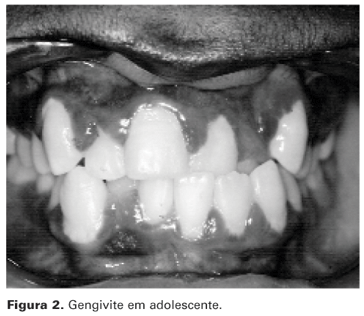OBJETIVE: Systematic review of present knowledge about the association between diabetes mellitus (DM) and periodontal disease (PD) with emphasis on their physiopathogenesis. DATA SOURCES: Bibliographic search through MEDLINE and LILACS databases, in the last five years, using the following descriptors: "diabetes mellitus", "periodontal disease", and "periodontitis". SUMMARY OF DATA: Periodontal tissues are the oral structures most affected by DM. DM predisposes to the development of PD, which leads to loss of glycemic control, which emphasizes the importance of the two-way relationship between these two diseases. Several mechanisms are involved in the physiopathology of PD associated with DM: production of advanced glycosilation products, deficient immune response, inheritance of certain genetic polymorphisms, alterations in blood vessels, conjunctive tissue and salivary composition. In the initial phase, gingivitis and periodontitis predominate. If not detected early, these problems can develop into advanced periodontal disease. Puberty, with its hormonal alterations, longer duration of the disease, poor metabolic control and inadequate oral hygiene are factors that contribute to PD progression and aggressiveness. CONCLUSION: Better knowledge about the mechanisms involved in the physiopathogenesis of PD associated with DM would help to institute early preventive and therapeutic measures. It is important for doctors and dentists to instruct their patients with DM about the need for good glycemic control and adequate oral hygiene, to minimize the risks for the appearance of periodontal disease and consequent loss of glycemic control.
Diabetes mellitus; Periodontal disease; Periodontitis




